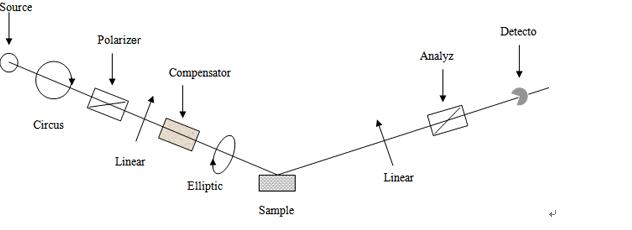- 首頁
- 橢偏儀
橢偏儀
 |
Theory of Ellipsometry
After reflection on a sample surface, a linearly polarized light beam is generally elliptically polarized. The reflected light has phase changes that are different for electric field components polarized parallel (p) and perpendicular (s) to the plane of incidence. Ellipsometry measure this state of polarization or more precisely the complex ratio rho written as:
ρ = rp/rs = tanΨ * exp (iΔ)
Where Psi and Delta are the amplitude ratio and phase shift, respectively, of the p and s components and are the ellipsometric parameters (often given as tan Psi, cos Delta) measured as described in the Signal treatment and calibration section. The reflectance coefficients are directly related to the optical constants of the surface by assuming the ambient is air ( Fresnel relations ):
rp = ncosΦi - cosΦr / ncosΦi + cosΦr
ri = cosΦi - ncosΦr / cosΦi + ncosΦr
when n is the complex refractive index n = N - ik of the surface. The angle of refraction may be obtained using Snell-Descartes's Law:
sinΦi = nsinΦr
Thus if the sample is an ideal bulk, the real and imaginary parts of the complex refractive index may be calculated from the measured tan Psi and cos Delta parameters with the knowledge of the incidence angle. The optical index and thickness of a transparent layer on known substrate can also be deduced in the same way. This kind of analysis is characteristic of a single wavelength ellipsometric measurement.


